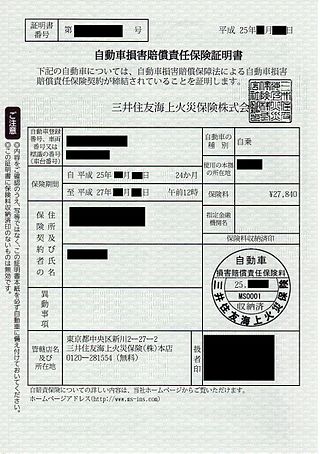Chronology of vehicle insurance in France
The history of Vehicle insurance in France began in 1929, [16] with the creation of the French Central Bureau of Insurance Companies for the study of automobile accident statistics. On July 13, 1930, in light of the increase in automobile traffic, the legislature decided to regulate vehicle insurance.
As World War II came to an end, road traffic increased, [17] as did the number of casualties. To raise public awareness, insurance companies, with the help of the Union Routière de France, took the initiative in 1949 of creating the Prévention Routière . This organization's mission is to encourage, study and implement measures aimed at reducing the frequency and severity of road accidents. It set up an information and public awareness network. In 1972, it was reinforced by the Comité Interministériel de la Sécurité Routière (Interministerial Road Safety Committee). Its aim was to make road users aware of the risk factors associated with driving: speed, alcohol, non-use of seat belts, fatigue, etc.
At the time, insurance was not compulsory, which meant that victims could find themselves doubly injured in the event of a serious bodily injury accident: if the drivers responsible did not have the means to compensate the victims themselves, the latter would not only have to bear the cost of their injuries, but also receive no compensation. To put an end to this injustice, the law of December 31, 1951 created the Fonds de garantie automobile (FGA). Its purpose was to pay compensation to victims of personal injury accidents caused by vehicles whose drivers were unknown, uninsured or insolvent. The FGA's financial limits soon became apparent. Most cars were insured, although two-wheelers had the least coverage rates and were the most exposed to serious injury. [18] [19] Six years later, on 27 February 1958, legislators decided to make Vehicle insurance compulsory for all.
In 1955, the Bureau commun automobile (BCA) was created, bringing together independent automobile adjusters to rapidly estimate the cost of claims on behalf of insurance companies. The BCA succeeded the 1954 Convention Expertise. [18] [20] However, the adjusting profession did not organize itself until 1972.
On May 1, 1968, the Convention d'Indemnité Direct des Assurances (IDA) was introduced, enabling insurance companies to compensate policyholders directly, without waiting for the outcome of a more lengthy recourse procedure under ordinary law. The convention introduced a liability scale to simplify procedures between insurance companies. This agreement facilitated the processing of almost 80% of claims. [18] In 1974, it became the Convention inter sociétés de règlement des sinistres automobile (IRSA).
To reward good drivers and penalize bad ones, the legislator introduced the bonus-malus system on June 11, 1976. [21] However, its existence was challenged by the Brussels Commission, which considered that it undermined free competition and contravened the third directive regulating non-life insurance, which came into force on July 1, 1994. But on September 8, 2004, the European Court of Justice ruled in favor of the French system. [22]
On October 1, 1977, the application of the Convention d'indemnisation des accidents corporels (IDAC) came into force, with the aim of improving the time taken to compensate bodily injury claims.
In the wake of the Charoy affair, [23] public authorities realized that members of the driver's or insured's family were not automatically insured in the same way as third parties. Indeed, Article L. 211-1 § 5 of the French Insurance Code did not consider them to be third parties until January 7, 1981. [24] Prior to this law, if the driver did not take out special insurance for his family, its members were not compensated in the event of an accident. The change in the law in their favor meant that passengers were systematically insured, without having to take out a special option.
On July 13, 1982, all insurance contracts covering damage to property were required to include cover against natural disasters.
In the event of a traffic accident, ordinary civil liability under articles 1382 and following of the French Civil Code applied. [25] This posed problems when it came to establishing a fair system of compensation for bodily injury, as the driver may be totally or partially exonerated from liability in the event of an extraneous cause.
On July 21, 1982, the Second Civil Chamber of the French Supreme Court (Cour de Cassation) handed down a controversial ruling known as the "Desmares ruling", launching an all-or-nothing policy to the detriment of victims. If the victim was at fault, he or she had no recourse against the driver. Added to this is the fact that the number of people injured on the roads is rising, approaching 300,000 a year. [18] [26] Some judges refused to apply this ruling, creating an imbalance between courts. To ensure that no road accident victim went without compensation, the Badinter Law was passed on July 5, 1985, and came into force on January 1, 1986.
On January 1, 1986, the Convention d'indemnisation pour le compte d'autrui (ICA) was introduced. It was succeeded on April 1, 2002, by the Convention d'indemnisation et de recours corporel automobile (IRCA). [18]
The Vehicle Insurance Fund was being overstretched by claims caused by uninsured drivers. As a result, the legislator made it compulsory to display the insurance sticker on vehicles from September 9, 1986, onwards. This made it easier to monitor compliance with the insurance obligation and to impose more effective penalties.
On June 25, 1990, the law made it compulsory for fire coverage in vehicle insurance contracts to also cover damage caused by various types of storms, including tropical cyclones. [27]
As of 2018, private insurance and license plate files are to be cross-referenced to enable the authorities to monitor insurance automatically. [28]















